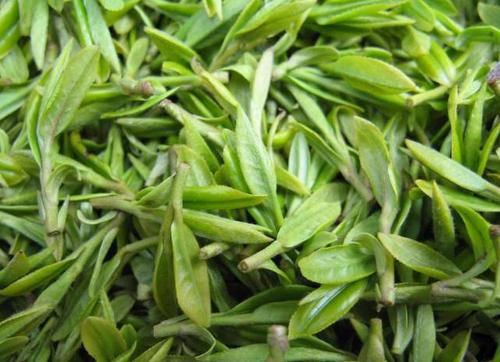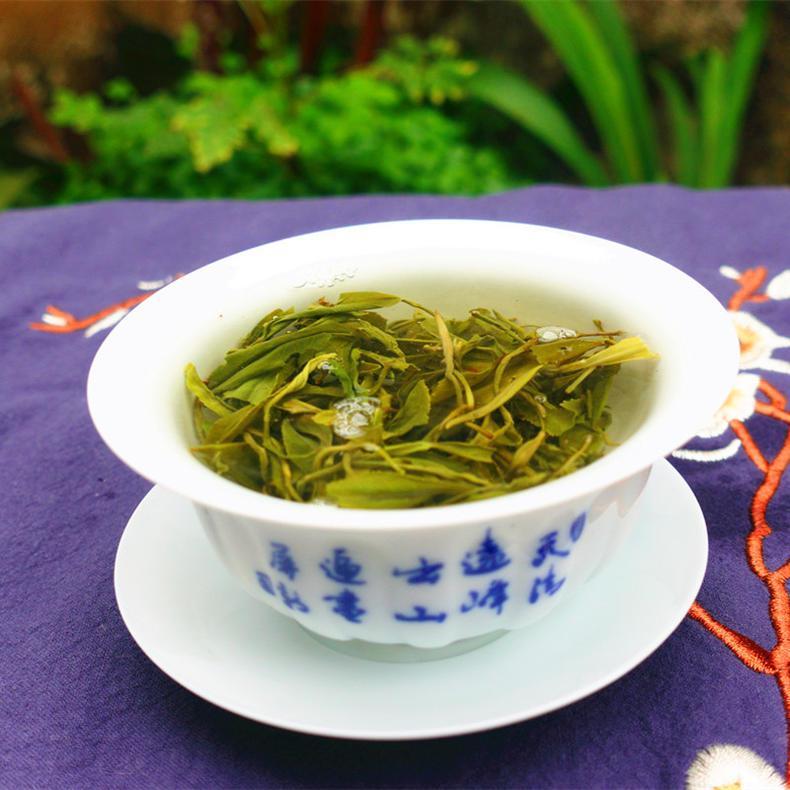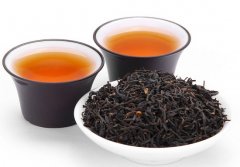What kind of tea is Daye green tea? where is it from? What are the more famous varieties of tea in Guangdong?
Guangdong is a famous export trade province in China, from which tea was first exported to the world. But in terms of tea production, it is not as famous as Zhejiang and Fujian. The famous products are Phoenix Dancong (oolong tea) and Yinghong 9 (black tea). Daye green tea, as a local tea, used to be very popular. However, due to the decline in production in recent years, it will gradually be forgotten.
What is Daye Green Tea?
Dayeqing is also known as Guangdong Dayeqing. In Chinese, it means big leaf green; the name is very confusing. Because in the Chinese context, some green tea, oolong tea and Sunning Pu'er tea can also be called by this name. Interestingly, Dayeqing does not belong to one of them; it belongs to a rare kind of tea-yellow tea.
Dayeqing originated in Shaoguan, Zhaoqing and Zhanjiang, Guangdong. It is said that it began in the Ming Dynasty more than 400 years ago. Here is South China, tropical climate, the annual average temperature is maintained above 22 ℃, and the precipitation above 1500mm is obtained. Especially in Shaoguan area, the geology belongs to Danxia landform, and the soil is rich in nutrients, which is beneficial to the growth of tea trees. This kind of tea is made from the fresh leaves of Yunnan big-leaf tea trees. Guangdong people are simple, so they also call this kind of tea "Dayeqing".

We know that Zhengshan race has a unique smoky smell of pine trees. Similarly, Dayeqing also has a strong rice husk aroma because it is processed by a special process called yellowing. Compared with other kinds of tea, it has obvious characteristics; the finished product contains tea stem. The leaves and stems of Daye Qing should be large, generally 10-13 cm long; this is the quality standard of the product. Whether loose leaves or bubble leaves, are yellow, in line with the characteristics of yellow tea.
How is Daye green tea made?
Although the processing of yellow tea is not as complicated as oolong tea, it is not simple either. Moreover, the processing method of Dayeqing is also different from other yellow tea. Fresh leaves will not be fixed immediately after picking; they will wither first. Different step order makes the herbal odor of Daye Qing less. After yellowing, the aroma is more pure and mellow.
[withering]
The picked fresh leaves will be placed on the bamboo screen for withering work. The weather in Guangdong is always sunny and rainless, so the work is usually carried out outdoors. In order to make the tea more easily blown away by the wind and take away the smell of herbs, the tea artist will stir the tea 1-2 times at work. Stir gently, or the leaves may break up, leading to excessive oxidation; in this case, they can only be made into oolong tea.
Outdoor wilting usually lasts for 1-3 hours. If the weather is too hot, the tea master will choose to wither indoors; it may take 2-4 hours. The processing of Daye Qing only needs mild oxidation, unlike the deep oxidation of white tea. Withering is the main processing step, which takes several days.
[kill Youth]
Killing green is the basic step of tea processing, which is to prevent tea from continuing to oxidize. After withering, the leaves will be fed into specific machines or fixed by traditional manual methods. When the leaves and stems turn dark green, there is a sticky feeling that can't be broken, and the work is done.

[kneading and twisting]
Rolling tea is used to make tea. A major feature of big-leaf green tea is that the leaves are larger, and tea artists usually roll them into strips so that they don't stand out when they are mixed with the stem. Of course, in modern times, most of the rolling work will also be done by machines.
[muggy yellow]
Stuffy yellow is a special and important link in the processing of yellow tea, which has a great influence on the quality of yellow tea. In the process of blocking the yellow of Dayeqing, the tea maker rolled up the tea leaves and piled them up, then wrapped them in a wet cloth and placed them in a dark, damp, windless place. During the processing, the temperature of the tea stack will be kept at about 35 ℃ and the cost will be about 3-5 hours. They turn yellow, lose all herbal smells, and give off a strong cooked aroma.
[dry]
The next job is to dry. Yellow tea is usually roasted and dried, and the water content of the finished product is less than 6%. Similarly, most of the drying work will be done by specific machines.
Important Notice :
前街咖啡 FrontStreet Coffee has moved to new addredd:
FrontStreet Coffee Address: 315,Donghua East Road,GuangZhou
Tel:020 38364473
- Prev

What is Fat American Coffee? Taste characteristics of fat American production method Chemical reaction between Coffee and Coke
Coffee and coke, sounds like a bad idea? No no no! Many people have tried this seemingly dark match. It has also been given a lovely Chinese name Fat American style! Interestingly, although Coca-Cola is an American-made drink, Feimei seems to have originated in South Korea and Taiwan. Fat Americano combines classic Coca-Cola and espresso perfectly.
- Next

Japan's famous black tea brand which tastes good Japanese people like to drink black tea historical story brief introduction
Black tea accounts for less than 1% of Japan's total tea production, a marginal product in an industry dominated by green tea. Its rarity and difficulty to find are deeply rooted in Japanese culture. For more than 150 years, the country had tried to stimulate production, but despite efforts and resources, it had never been able to do so. However, in the last decade or so, we've seen black tea
Related
- Beginners will see the "Coffee pull flower" guide!
- What is the difference between ice blog purified milk and ordinary milk coffee?
- Why is the Philippines the largest producer of crops in Liberia?
- For coffee extraction, should the fine powder be retained?
- How does extracted espresso fill pressed powder? How much strength does it take to press the powder?
- How to make jasmine cold extract coffee? Is the jasmine + latte good?
- Will this little toy really make the coffee taste better? How does Lily Drip affect coffee extraction?
- Will the action of slapping the filter cup also affect coffee extraction?
- What's the difference between powder-to-water ratio and powder-to-liquid ratio?
- What is the Ethiopian local species? What does it have to do with Heirloom native species?

